Popular Camera Settings 2012 & Their Meaning(lessness)
31/12/12 18:07 Filed in: Photography & Art

Reuters made a list of what they think the best photographs taken in 2012 with a whole range of information including camera settings.
Now the photography enthusiast and Reddit user hallbuzz made a list of all the camera settings of the 95 images from the Reuters list including camera brand, lens type, shutter speed and f-stop. Then another Reddit user mathiasa turned all this information into charts. See the charts on petapixel.
When looking at the charts one could be tempted to think that in order to be one day on the list of the 95 greatest photographs of the year, chosen by Reuters, one just can buy the equipment mostly used and the settings mostly applied. But is that so?
How often do you shoot a sports event like the Olympics? Are the best photographs shot with a Canon, rather than with a Nikon?
What are the charts tell? Photographers of press agencies get equipped by their employer and the employer chooses a camera brand of good quality he can get a good deal with. Same for the lenses, reflecting also in the f-stop stats. And from there it’s a bit of everything, depending on subject and location.
So, what does this example of stats of popular settings tell us? There is nothing like a popular setting one can just use, because others do. Camera settings always depend on the light and nothing else.
Happy snapping!
Ute Sonnenberg for www.rohoyachui.com
Travel Memories 2008: On Safari in Africa - Day 19
30/12/12 18:03 Filed in: Travel & Inspiration
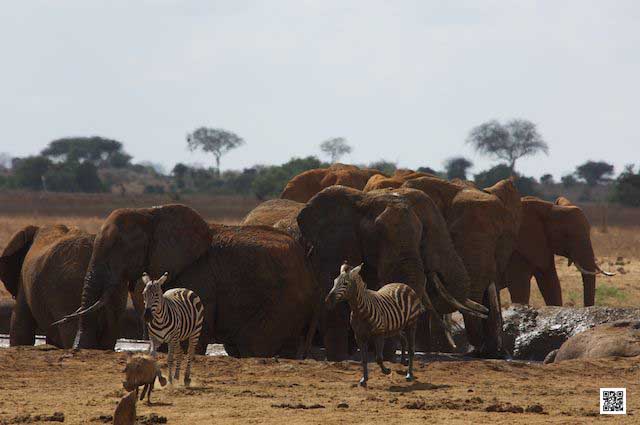
Unfortunately the bats had left behind quite a mess in the bathrooms and it was really a shame that nobody had thought about nets to keep them out. The facilities were really nice, except the other visitors. I found out later that every morning people are coming to clean the whole place and it’s fine until the bats come back. Nobody seemed to be bothered by it.
Tsavo East is well known for the elephants and we went out to find some. It was very dry and then the best thing to do is going to a waterhole. According to Paul there was a big dam where we could find plenty of animals. When we got there the dam was dry. Even Paul was surprised. He had never seen the dam dry. Not far away was another smaller waterhole and there the elephants were. It actually didn’t look much like a waterhole, more like a mud-hole, but the animals seamed happy with it. The elephants were standing in the mud, enjoying cooling down. Zebra, warthog, jackals and ostrich carefully tried to sip water from the mud. We stayed for hours.
In the afternoon we cruised through another part of the park and also there were plenty of elephants. Beautiful red colored elephants, from the red soil in the park.
Ute Sonnenberg for www.rohoyachui.com
Photo Safaris and Africa Travel Catalog
Safari Story: Leoaprd Teens and a Stressed Mom
29/12/12 18:02 Filed in: Safari Story

We had planned to stay the whole day out, with packed breakfast and the lodge would bring us lunch later. We were on a photo safari in the Sabi Sand in Kruger National Park in South Africa, the heaven for leopard photography lovers.
Staying the whole day out in the bush has the advantage that you can stay with the animal when you eventually found it and follow it the entire day. We had found a female leopard. She had two pretty “old” cubs of about 18 months old, two boys, still staying with her. Usually the cubs have to live on their own by this age, but the boys seemed to enjoy their mother’s care and were in no rush to live on their own and do all the hunting themselves. The mother is a good hunter and also this morning she had a kill hoisted in a tree. But there was no sign of the boys. After she had fed on the kill for a while she started calling for the boys. No response. She started walking away from the tree looking and calling for the boys. The calling is a gentle sound, heard by the cubs and telling them mom is calling and expecting response. But nothing. The mother kept going and calling and after about one hour doing so, she seemed to have enough. Now she was really calling, a loud, strong leopard call that made clear she will take no nonsense anymore. And suddenly one of the boys popped up, just a few bushes away from her approaching her in apologies and trying to sooth her anger. After a moment of accepting the cubs attempts to make it up again, they wandered off to the tree with the kill.
Ute Sonnenberg for www.rohoyachui.com
Photo Safari Essentials eGuide
Sony A99: One of a Journey into Still Photography
28/12/12 21:02 Filed in: Photography & Art

For some reason Sony seems to me rather the excellent video camera brand than a still photography brand, although more and more of my photo course safari guests have Sony cameras and I get to use them in order to help and explain. Somehow they don’t feel “ripe” yet and functionality, menu and displays seem influenced by video cameras. But maybe that is something one got to get used to, I don’t know.
Well, there is the new Sony A99 and when I read the review from Phoblographer I get the impression that they had a bit the same feeling about it. Please read yourself and experience the camera yourself, if you can. They are doing great work and who knows, maybe one day they will overtake the Nikons and Canons.
Lets see how it goes.
Ute Sonnenberg for www.rohoyachui.com
Photography Rankings and What They Mean
27/12/12 12:29 Filed in: Photography & Art

“Ten percent of all of the photographs made in the entire history of photography were made last year — an astounding figure. More than ever before, thanks in part to cell phone technology, the world is engaged with photography and communicating through pictures. Nonetheless, a great photograph will rise above all the others.”
This quote comes from TIME Picks the Top 10 Photos of 2012.
But what is a great photo? Somehow the first image they choose with the man from Ghaza reminds me very much of the winning photo of Word Press Photo 2012. Are they playing safe by choosing what won an award elsewhere or do they really find it one of the greatest photos of 2012?
The problem is, that all rankings and awards are subject to the subjective judgment of the jury. They have an idea what they want an image to look like and the one that gets the closest to the idea is the winner. But what a jury likes is not necessary what you like and find a great image.
A great image is an image that appeals to you, an image you love and can’t stop looking at. A great image draws you into it and makes you discover new things all the time. It lets you experience the feeling it captured and takes you on a journey.
A great image, is an image you love.
Ute Sonnenberg for www.rohoyachui.com
The Power of Surprise in Photography
26/12/12 14:48 Filed in: Photography & Art

We don’t like unpleasant surprises, we like nice surprises; yet both ways, surprises have the power to make us more creative. When you plan to photograph your friend’s birthday party you will get from one surprise into the other, because the people will just not do what you as the photographer want them to do. You got to come up with creative solutions to get some nice pictures anyway. And at the end your own photographs will be the surprisingly good.
When you walk through your town, garden, in the woods or in the park, with every step you might be surprised by new photographic opportunities. And you will try to capture them the way they surprise you. Lets not mention walking in the bush and being surprised by an elephant, well then there is no time for photo safari snaps, then its time to run.
But isn’t it always the surprise of beauty that makes us snap? The moment of awe we capture and go back to when looking at the images. Surprise can reflect in the images in many ways, from the blurred photo, because we were surprised by that photographic opportunity coming along just now and we were not ready, to the building that surprised us with its beauty.
Look at your images and see how they surprise you, again and again, every time you look at them.
Keep being surprised and capture the awe!
Ute Sonnenberg for www.rohoyachui.com
The Story of Joseph Woodland & It's Meaning for Photographers
24/12/12 10:53 Filed in: Photography & Art
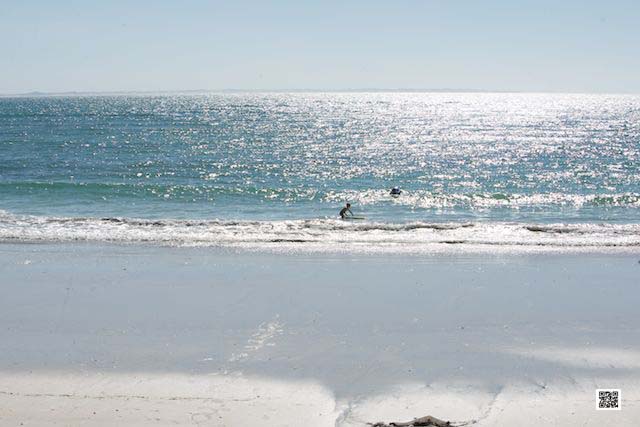
Joseph Woodland died this month at the age of 91 and he is the man who invented the bar code as we find it on anything we are buying nowadays. The invention was made in the late 1940ies and patented 60 years ago. Woodland, a graduate student, worked together with his classmate Bernard Silver on the technology, but it was Woodlands experience as a boy scout and sitting for months on the beach in Miami what brought the breakthrough.
When the work didn’t progress at university he quit and spent a winter in Miami Beach where he was sitting the whole day on the beach thinking. And then suddenly the puzzle fell into place. The knowledge of the simple Morse code, he learned as a boy scout, and running his fingers through the sand made him suddenly draw lines with four fingers, realizing that these lines could be wide and narrow depending on the information they carry and the bar code was found.
Woodland and Silver were ahead of their time and the scanning technology was not yet ready to apply the invention for mass production. They sold their patent for USD 15,000. That was all what they got for it ever, besides the honors from the academic world.
But what is the essence and what does it tell photographers? Your way of photographing might be different than what anybody else is doing and what no photography course is teaching, but it doesn’t mean that it is no good. You might just be creative and ahead of your time. As Woodland did, be yourself and follow your intuition, your path. There might be a point that all puzzle pieces will fall into place. Well, and don’t give away your art to quickly and to cheap, at least if you are in the position to wait. You are creating something with every photo you take, worth attention and respect.
Keep going!
Source: The New York Times, read the full article here
Ute Sonnenberg for www.rohoyachui.com
Travel Memories 2008: On Safari in Africa - Day 17 and 18
23/12/12 19:39 Filed in: Travel & Inspiration

Day 17
We decided to have a quite day with our game drives and also a long rest around lunch. It was just so hot. It felt like being roasted on lave stone and at the same time it was so beautiful, so irresistible beautiful that one takes it all just to be there.
Day 18
We left the campsite at 8.15 a.m. and headed to the main gate of Tsavo West Mtito Andei to hit the road to Mombasa.
It was a short drive to Voi where we did some groceries and I got myself some chocolate and a stroll through the market place. The main gate of Tsavo East was just outside Voi and the campsite Ndololo just 20 minutes from the gate. We arrived there before lunch and pitched camp.
When we were about to have lunch a troop of baboons was lining up to get our food. I encouraged Alex to make a statement with the catapult to make clear who is the boss. He would be the one staying in camp when we are out and they would make life for him very hard if he wouldn’t do something right now. He went after them and they got the message.
Tsavo East is huge and doesn’t have many roads. It felt to me like a paradise for the animals, because they can live their lives unbothered by vehicles if they want, yet we had great sightings too. The first afternoon we spotted already lionesses, actually quite close to the camp, on their way to hunt. It was a good start.
When we got back to the camp I wanted to take advantage of the good facilities of the campsite and went off to have a shower. It was almost dark and when I entered the shower I saw them, bats everywhere. I didn’t feel comfortable and hurried up to get away form them quickly.
Ute Sonnenberg for www.rohoyachui.com
Safari Story: Warthogs in the Camp
22/12/12 13:54 Filed in: Safari Story

They are lovely creatures these warthogs, the wild boars of the bush. They always look funny when they run with their tails up as soon as you stop the vehicle. Do you know why they are always running with their tails up? When warthogs run through the bush or high grass they close their eyes not to get branches and grass in their eyes, but when they close their eyes they don’t have enough skin anymore and their tail goes up. …. Well it’s an African tale, but one wouldn’t be surprised, if it would be true with these funny animals.
They would actually be great pets and in some bush camps they are living right in the middle of all the guests, but claim their ground, if you come to close. And so they do at Kichwa Tembo in the Masai Mara. A whole family lives in the camp where they feel safe close to humans. But don’t be mistaken, they are wild animals and you cannot touch them neither approach them, they are very particular about their personal space. Yet there is nothing nicer than getting out of the tent in the morning and the first thing you see in front of your tent is a warthog family enjoying the morning sun of a brand new wonderful day in the bush.
So, when you see somewhere excellent warthog photographs, the photographer might have had the opportunity to photograph them just in front of his/her tent. That makes the photographs still great photographs only there is no exciting adventure of spotting them attached.
Happy warthog encounter!
Ute Sonnenberg for www.rohoyachui.com
How to Photograph on Christmas
21/12/12 17:52 Filed in: Photography & Art

Billions of photos will be taken on Christmas around the world, billions of videos will be shot and Youtubed on Christmas and billions of people will look at them and watch the videos. It will be mostly the same objects like Christmas trees, families at their Christmas feasts, families unpacking presents, Christmas decorations, children playing and people partying.
There are only few images taken at such an event that are interesting for a broader group of people (also those who don’t know the people in it) and these images are the ones that enable the viewer to become part of the family he/she is actually not part of in real life, but learns about them in an intimate way through the photographs.
How can those images be taken? First of all just shoot away without thinking too much. Then add to your focus of seeing (not on your camera) “motion” and from there go to photographing “emotion”. Your photographs will gain depth, what makes one keep looking at them and constantly finding new things in them.
This can be applied to any photography, yet Christmas is a good point to start.
Enjoy it and be surprised by the results.
Ute Sonnenberg for www.rohoyachui.com
Surprising Photography: It's Real
20/12/12 19:10 Filed in: Photography & Art
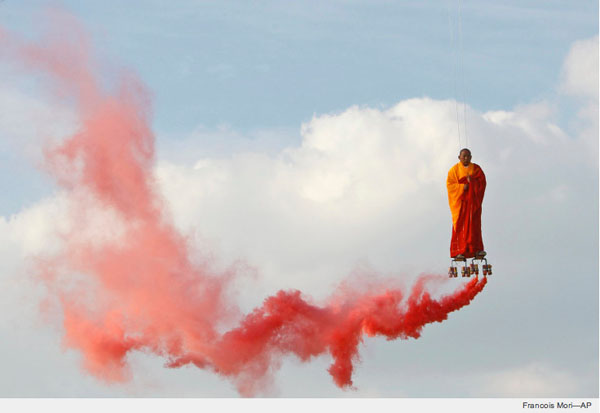
This monk traveling the sky on magic powered, red smoke exhausting, like roller blades looking devices might be very tempting to be thought being photoshopped, but its not. It’s real. This is what the Chinese artist Li Wei performed at La Villette in Paris in March 2012.
And this one, president Obama holding a crystal ball in his hands looking for the future of the world, which could be a typical example for photoshopping, and its not. Also this one is real.
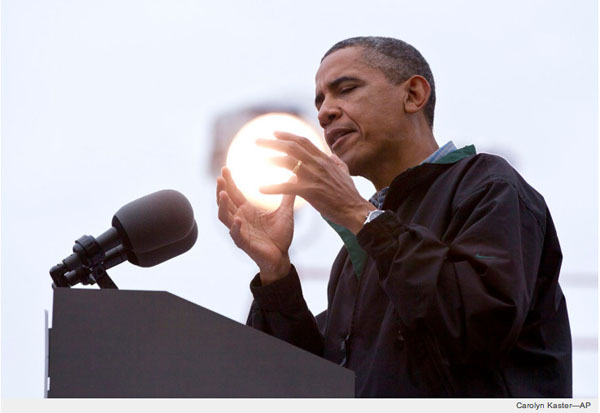
These two images are from the TIME Magazine’s TIME Picks of the most surprising photos of 2012. They are a wonderful example how real moments hold the most beautiful surprises and one only needs to see them, well and press the shutter at the right time. But they are there and it’s again a pure question of seeing.
Keep your eyes open and look for the surprise and captured it.
Happy snapping!
Ute Sonnenberg for www.rohoyachui.com
The Downside of Photo Apps: Instagram
19/12/12 15:51 Filed in: Photography & Art

It was so much fun, snapping away with Instagram, having fun choosing a fancy filter and sharing it right away with your social network. That was almost a year ago and many has change since then.
It started with the photo app getting slower with every update. Somehow they managed to make the app more complicated with the same features. Just so many steps have to be completed and decisions to be made before being able to shoot the next photo.
Then Facebook bought Instagram for an astronomic amount of money and the updates felt more and more like Facebook strategy of tightening up the service for total control and merger with the social network. Now the next step was taken with the new user terms and conditions with as a result a huge outcry of the Instagram users from photo journalists to National Geographic and everyday snappers. Instagram can sell your images without telling you for advertising, and you won’t see any payment, you won’t even know.
It is a very confusing and disturbing matter. National Geographic as paused their Instagram account and might erase it, if the terms are indeed of that meaning. People went onto the streets to protest against it and a whole wave of blog posts is trying to explain what’s going on.
Most worrying is also the mention that the Instagram terms are pretty much the same now as the Facebook terms, which would mean that Facebook can sell you photos without telling you and mostly using them as they wish.
Where is this going? It is like anything people like, enjoy and love is kidnapped, held hostage and abused by greedy powers or going more the psychological path, narcissistic powers?
Read more about it in the listed blog posts below:
Instagram changes terms of service, but will pro photographers flee anyway?
Insta-gone?
No, Instagram can't sell your photos: what the new terms of service really mean
Why I Quit Instagram
Instagram Clearly Hates You, So Quit
New Terms of Use for Instagram: Selling Your Photos Against Your Will
Why Instagram is Great for Photographers, and Why You Shouldn’t Use It
Facebook Poisons Instagram For Its Most Valuable Users: Real Photographers
Ute Sonnenberg for www.rohoyachui.com
Paperwork Help to Sell Your Images
18/12/12 17:03 Filed in: Photo Tips
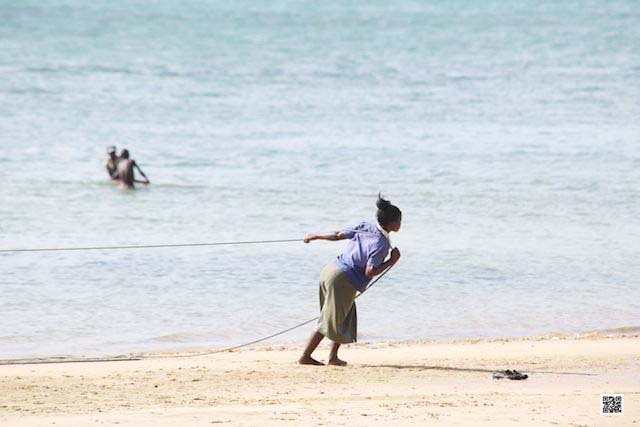
Have you ever been in a situation that you wanted to sell an image, but were unsure if you could, because there were people in it and houses? If you had liked to sell it to Getty Images, they would have told you immediately that you would need release forms to do so. A release form for each person, also miners and for each house would be needed.
Do you have release forms right at your disposal whenever you walk the streets? Probably not and even finding out where to get them can be a mission. At least it could be a mission, but there is help. Getty Images itself provides release forms to be used by photographer who want to submit images to them. And there is also Docracy, a website that provides all relevant forms for photographers, put together by professional photographers in the United States. Even contracts when you want to work with galleries and other really important forms are available on their website to make your life easier and safe with regards to your rights and a proper payment.
You might want to consult an attorney anyway, but the forms make you already wiser for the conversation with the legal professionals.
And now the probably most difficult part of having the forms with you whenever you are out to snap away. You will really not find that person ever again you just snapped at the park, just let the person sign the form and you are safe when selling the image.
Think practical and make it easy for yourself.
Happy snapping and selling!
Ute Sonnenberg for www.rohoyachui.com
Photo Gift Hunting made Easy: Xmas Last Minute Specials
17/12/12 13:25 Filed in: Technology & Gadgets
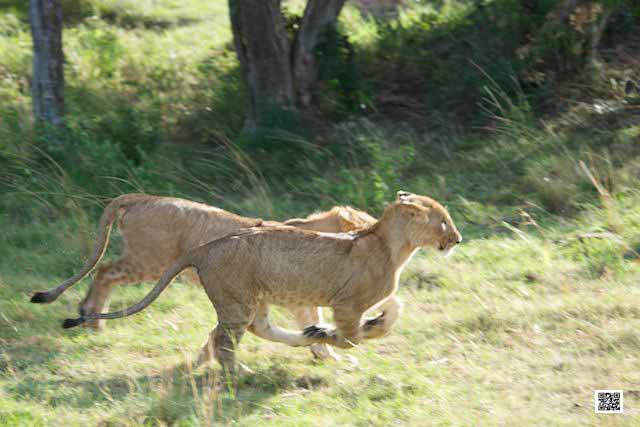
In case you don’t have all the Christmas presents yet and the cameras and electronic gadgets were just too expensive, then your time has come now.
You can purchase the Nikon D600 with 24-85mm lens now for under USD 2,000. Check it out on Amazon, B&H Photo or Adorama.
And an event that is just right before Christmas visit the Amazon 48 hours Overstock Event and get great deals.
Happy gift hunting!
Ute Sonnenberg for www.rohoyachui.com
Travel Memories 2008: On Safari in Africa - Day 16
17/12/12 12:14 Filed in: Travel & Inspiration

We heard baboons alarming the whole night. We thought the lions must still be there then and we went straight to the spot where we saw the lioness. Nothing. Paul checked other roads he thought they might have crossed, but nothing. They were gone or deep in the bush.
So we drove over to Mzima Springs, a beautiful lake and drinking water source. They built some kind of a tower in the lake where one can see the fish swimming and look just above the waterline like a hippo. A lovely place and Paul took the chance while staying there to clean our vehicle from tsetse flies. He was not very patient and focused this morning and I heard later that a family member wasn’t well and he was worried. Next to that we had to go to the main gate to recharge our smart card to be able to pay the park fees. Still a consequence from the mixed up itinerary.
We tried to leave worries and annoyance behind when we headed out for the afternoon game drive and we got rewarded. Three klipspringers were playing around on the rocks just next to the road. That was a rare and awesome sighting.
That night I woke up and was afraid. Chewing noise very close to my tent and very loud. I thought this must be something big and my new tent was very small, 1,50 m x 1 m and 70 cm high. I was lying there thinking, if this something big steps on my tent I’m gone, but I told myself too that there was a little roof above the tent and that would prevent an animal from stepping on the tent. I fell asleep again and heard the next morning that it was a giraffe.
Ute Sonnenberg for www.rohoyachui.com
An Elephant Story: Love and Care
17/12/12 12:13 Filed in: Travel & Inspiration
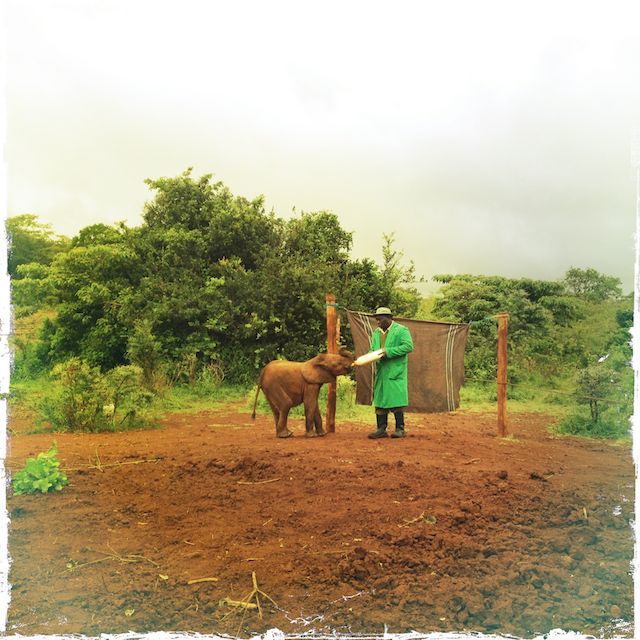
There is a place in Nairobi where elephant orphans find a safe home and get all the help to have eventually a normal wild elephant life in the bush. This place is the David Scheldrick Wildlife Trust Elephant Nursery. The elephant nursery in Nairobi is located at the Nairobi National Park, only 10 minutes away from the closest supermarket in the suburb Karen. Nairobi’s great nature environment gives home to orphaned and rescued elephants where they are hand reared with lots of love and care.
Daphne Scheldrick developed a special milk formula to get the babies through the critical first months of their life. 24/7 care by the Keepers and a meticulous nursery program make it possible that many traumatized and vulnerable elephant babies can eventually have a normal life within a wild elephant herd in the fantastic 12,000 square kilometers huge Tsavo East National Park in Kenya.
It is an amazing program and as a tourist one can get a glimpse by visiting the nursery for feeding time at 11 a.m.. The entrance fee is KSH 500, which is about 5 Euro and the money is spend entirely for the wellbeing of the elephants. The nursery allows insights how the Keepers live and sleep with their elephants and of course absolutely lovely photographic opportunities during the feeding time with immense big bottles.
Read more about the program on their website and put it on your to-do list when visiting Kenya.
Ute Sonnenberg for www.rohoyachui.com
http://www.sheldrickwildlifetrust.org/
Bringing Back the Magic and Finding the Awesome
14/12/12 15:33 Filed in: Photography & Art

One might be tempted to say that photography has become hyped up as a technical spectacle of megapixels and Photoshop features, with little magic left. Technology enthusiasts might disagree and say that the technology is magical and fascinating, yet that is a car too. What is the magic of photography?
Imagine you are walking the path you walk everyday, the route to your work, to the bus, to the subway or to the mailbox and you thought you have seen all what is to see on that path. But one day you take your camera and you photograph while walking that so familiar path and suddenly you start seeing again. There might be little flowers in your neighbor’s garden, a broken wooden chair in a driveway creating interesting patterns on the tarmac or a cat spying on you every morning from behind the curtains.
Photography makes us seeing and appreciating the beauty in little things we usually pass unnoticed. Photographs are moments of awe that brighten up our days. Maybe the magic of photography is simply the “seeing” with little technology needed, although technology can add lots of fun.
Keep looking for the awesome and find magic.
Happy snapping!
Ute Sonnenberg for www.rohoyachui.com
Think Twice about the Megapixel You Want
13/12/12 19:03 Filed in: Photo Tips
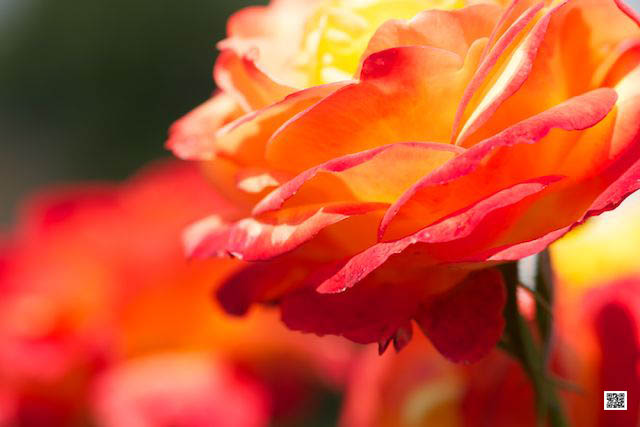
It was announced that Canon would come with a close to 50 Megapixel camera in October, but nothing happened. Yet the rumors are persistent that this “monster” will come and Sony will follow with their own high megapixel camera.
As questioned earlier, do we need or want that? The files are extremely big and the camera is getting slow and so does the upload to your computer.
Adobe guru Scott Kelby found out for himself when he wanted to upload 1,000 raw image files to an external hard drive. He had not considered the file size and the disk space was not enough to upload the 47 GB the 1,000 images were, shot with the Nikon D800. Just for the idea of comparing, 1,000 raw file images shot with the Nikon D3s are 15.5 GB and 1,000 jpeg images shot with the Nikon D700 are 6.5 GB.
Do we really want that?
Ute Sonnenberg for www.rohoyachui.com
information source: PetaPixel
Beck Hanson: Inspiration for Fun Photography Experiment
12/12/12 17:44 Filed in: Photography & Art

Singer-songwriter Beck Hansen has just launched his 11th album “Song Reader” and it’s an album you can only listen to when you play it yourself or others do it for you. This album comprises of 20 full-color booklets of sheet music!
What an idea! Can there be anything more inspirational and stimulating engagement and creativity like that?
Imagine “sheet photography”. How would that be? You take a photograph and instead of showing your photograph, you tell how it looks and feels. You describe what is on the photograph, the subject, the colors, the surroundings and then the people who want to see it photograph it. That allows the viewer/photographer to add his/her personal dimension to your picture, just like when playing Beck’s songs.
Want to give it a try? The photo is a vase on a coffee table in a private home lounge with a bouquet of wild flowers with the smell of late summer. If you would like to try it, just add a link to the image you took as a comment to this post and all images will be posted lets say before the end of this year.
Let’s go and keep snapping!
Ute Sonnenberg for www.rohoyachui.com
Is Google Saving the Rhino?
11/12/12 18:00 Filed in: Insights & Opinion
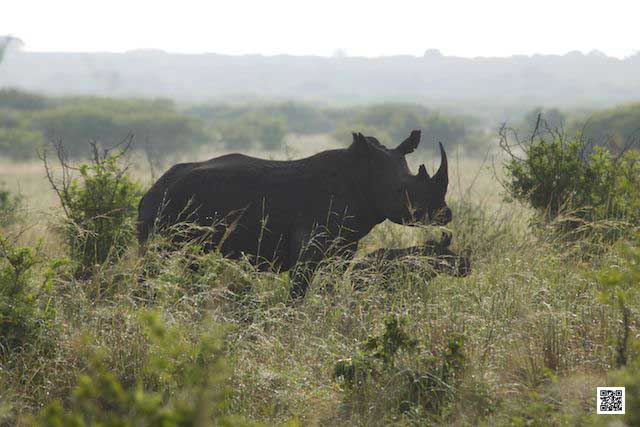
About 600 rhinos have been killed this year in South Africa alone for the myth of their aphrodisiac powers. There seems to be nothing that can stop it. Expensive anti-poaching programs and high sentences on the captured poachers seem to have little effect. The number of killed rhinos this year is significantly higher than last year and it is not only the dead of the animals that is shocking it’s also the brutal way they get killed, often left behind to bleed to death.
But there might be help from an unexpected source, Google! Google is funding the development of drones that hunt illegal hunters (poachers). The WWF wanted to hunt poachers with this unorthodox “weapon” and it seems to work. The drones are not armed, but they are the eyes in the sky for the ground troops. They were tested in Nepal and are to be implemented in the rest of the world, including Africa.
“Now, wildlife-protecting drones are coming to the rest of the world. Last week, Google announced they would help the WWF purchase African and Asian poacher-seeking UAVs . As part of Google's 2012 Global Impact Awards program, the WWF received $5 million to buy similar unarmed drones to watch and track African wildlife poachers.”
There might be light at the end of the tunnel and rhino poaching can be stopped. It would be such a good and peaceful application combining an initial war device and new economy money.
Seems there is hope and Google is really fighting the evil.
Read the full article by Fast Company here.
Ute Sonnenberg for www.rohoyachui.com
Louise Dahl-Wolfe: Natural Light
10/12/12 17:59 Filed in: Photography & Art

It might not be a model’s favorite thing to do, getting up at sunrise for the photo shoot at Miami South Beach, just because the photographer wants the best light. But isn’t natural light anyway the best light?
Louise Dahl-Wolfe was the pioneer in outdoor fashion photography, doing fashion photo shoots with natural light and inducing a whole movement, called Environmental Fashion Photography.
Some might prefer studio light, because it can be controlled completely, but natural light gives photography the authenticity we seem to be longing for in all we do and love. It is the ideal partner for great design and helps when the design is not so great by adding the splendid beauty of nature.
Louise Dahl-Wolfe understood the natural light very well and created the most beautiful fashion photography. Her work was and is inspiration to team up with the ambient light and encouragement for photographers to go outdoors!
Plunge into the natural light and see where it takes you.
Happy snapping!
Ute Sonnenberg for www.rohoyachui.com
Travel Memories 2008: On Safari in Africa - Day 15
09/12/12 16:29 Filed in: Travel & Inspiration

The battery of the vehicle was flat again. It was the fridge, draining it. Again with the help of the Masai we got going to our next destination, Tsavo West. Paul told me that we have to drive in convoy and need to be at the checkpoint at 9 a.m.. We hurried there, but only got there at 10 a.m. and it was fine. Everybody else had just got there. The convoy drove fast through the volcano landscape around Mount Kilimanjaro. It was beautiful. Black rocky ground, streams of lava. That’s what makes Tsavo West so special and hot like in an oven. We arrived at the campsite at 11.30 a.m.. What a nice short drive. And it was really very hot and dry.
After a rest we took off for the afternoon game drive. It was thick bush everywhere. The scenery was breathtaking and the tsetse flies were horrible. But it was all worth it. It was very beautiful and the view on Mount Kilimanjaro was the best. On our way back to the camp Paul spotted a lioness, just on the edge of the thick bush and close to our camp. We would come back first thing in the morning to follow up with her and the rest of the pride.
Ute Sonnenberg for www.rohoyachui.com
Photography for Business - How to get Started
08/12/12 16:27 Filed in: B2B
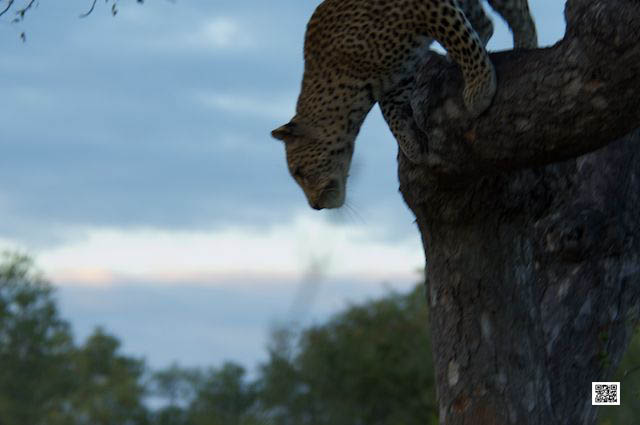
Photography is probably the most interesting tool for businesses to accelerate innovation and growth. But how to start and what does it need to use it?
Not much.
a camera, a cell phone camera is just fine
something to upload the images to like an iPad or a laptop
a training to learn how to read the images
Not needed are:
technical photographic knowledge
experience in photography
expensive equipment
What are the benefits?
Easy and instant access to insights and knowledge
Accelerates innovation and learning process
Allows access to until then untapped sources of information
And not to forget, it is playful and fun using it.
Let innovation begin now.
Ute Sonnenberg for www.rohoyachui.com
Live from the Masai Mara - Time to Leave
07/12/12 16:25 Filed in: Travel & Inspiration

The Masai Mara has spoilt us with incredible sightings, vast landscapes, beautiful weather, evenings at the bond fire, stories from the Masai people and the camp warthogs roaming between the tents.
It was an amazing photographic adventure with plenty of learning moments and fantastic images to take home. We don’t want to leave, but we have to, until we come back for another incredible photographic safari in the beautiful Masai Mara.
Asante sana (Swahili for “Thank you&rdquo
… all for now.
Ute Sonnenberg for www.rohoyachui.com
Live from the Masai Mara - Rewarding
06/12/12 16:22 Filed in: Travel & Inspiration

After the extremely amazing and spectacular game drives of the last days we had a quiet morning. Although a quiet morning in the Masai Mara means many elephants, all sorts of plains game, breathtaking landscapes and a delicious pick nick breakfast on the slopes of the escarpment, with an amazing view.
Well some in our group were a bit bored and found it difficult to see the beauty in the small things after the spectacle we had witnessed. Yet during lunch we agreed that wildlife photography is a lot about patience and that patience is always rewarded.
And it was rewarded. In the afternoon we went straight to a spot were others had just spotted the pride of lion we tried to see in the open during the last game drives, but only had seen some ears and heads far away. At arrival we saw the two male lion resting under a tree. After photographing the two male extensively we carried on to see the rest of the pride, in total 16 female lion and cubs!
It was just such an amazing sighting. The lion were scattered over a clearing and started getting up, yawning and playing. It was not possible to get them all in one photo, but at least about 10 of them at one stage. And then one of the male lion walked over to watch over them. He was obviously in control and not approachable for play! as he made very clear!

Such a sighting makes one very humble and grateful, feeling rewarded for being out there the whole day and patiently waiting that the bush and the wildlife give some glimpses of their beauty and make the photographers heart beating faster!
… more to come.
Ute Sonnenberg for www.rohoyachui.com
Live from the Masai Mara - Illusive
05/12/12 16:20 Filed in: Travel & Inspiration

In the early light of the morning we were out looking for the illusive big cats and we were lucky.
While heading to a spot where male lion with a kill were spotted the day before, suddenly a leopard was quickly glancing at us and just as quickly disappeared in the bushes.

When we arrived at the spot where the male lion were seen, nothing was there, not even a tiny piece of the kill, a young hippo. So we carried on and suddenly a herd of zebra, eland and impala ran out of a little forest. A cheetah came with them, obviously seeing something interesting while being carefully observed by the antelopes and zebras from a save distance.
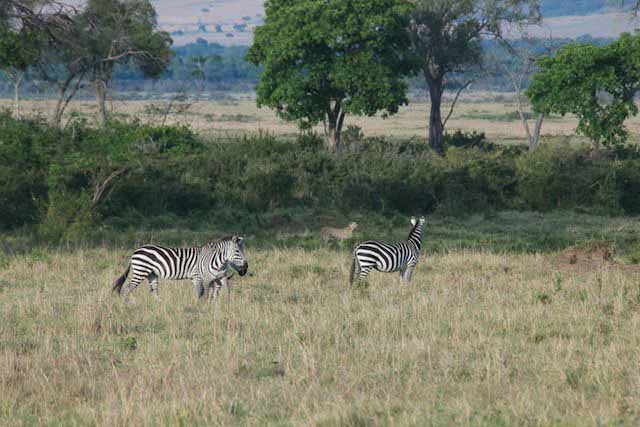
That was not all. Our driver told us that he had spotted a lion on a termite mount, well at least he could see him, we didn’t, even with binoculars. We headed to the spot and there was a sub adult male lion enjoying the morning sun.

All that happened within the proximity of the camp and during about two hours of our game drive. Not to forget the beautiful sunrise and the several herds of elephant roaming the area as well.
It is another beautiful day in the Masai Mara.
… and there is more to come.
Ute Sonnenberg for www.rohoyachui.com
Live from the Masai Mara - Zebra Crossing
04/12/12 16:17 Filed in: Travel & Inspiration

Saying that this time of the year is not high season and no Great Migration is going on, doesn’t mean that one cannot see a crossing. And a crossing is what we saw today.
Several hundreds of zebra were gathering at the Mara River when we approached. They seemed to be determined to cross the Mara River to enter the Great Plains of the Serengeti for better food. Some of them were already on the other side of the river and such a situation usually causes them stress. The families want to stay together and they keep calling each other to encourage the rest of the family to cross.
But that was not an easy task. Plenty of hippos were lying in the river and crocodiles couldn’t be far away. The zebras made a couple of attempts and stopped them when they saw the hippos. After approximately two hours of trying they gathered all their courage and moved into the water, first to drink and then they moved on to the other side of the Mara River. But now the crocodiles were gathering as well and suddenly there were about eight of them heading for the crossing zebras. They were ready to attack. One crocodile was holding a zebra on its back leg, another crocodile came to bite into the other back leg and another crocodile took the zebra by its neck. They pulled the zebra into deeper water and started rolling with it and pulling it under water. It was over for the zebra. Now eight crocodiles were pulling it apart and swallowed whatever piece they got hold of.

This one zebra saved all the others. It kept the crocodiles busy and happy and that meant no other casualties for the herd. It was an exciting and moving sighting and an amazing photographic adventure.
… more to come.
Ute Sonnenberg for www.rohoyachui.com
Live from the Masai Mara - Arrivl
03/12/12 16:14 Filed in: Travel & Inspiration

The Masai Mara is probably one of the most famous wildlife areas Africa’s. These Great Plains are dotted with trees and spoilt with an abundance of wildlife. This time of the year is not high season, not the time of the Great Migration, yet the Masai Mara is always wonderful. At arrival zebra, buffalo and topi surrounded the airstrip. And on our first game drive we saw already two cheetah and two male lion, next to giraffes, zebra and several species of antelopes. There seems to be something magical about this place that attracts the animals in big numbers.
But not only the animals are heaven for photography lovers, also the landscape is very photogenic. It’s the place for wide angle lenses and at the same time for zoom as well. The Masai Mara is just a wonderful place to play with photography and to capture lots of beauty.
… more to come.
Ute Sonnenberg for www.rohoyachui.com
Travel Memories 2008: On Safari in Africa - Day 14
02/12/12 07:02 Filed in: Travel & Inspiration

It was a clear morning. The wind had died and the Mount Kilimanjaro was beautifully visible. We went out to the little mountain/hill, serving as a viewpoint to photograph the Kilimanjaro. It was awesome and I enjoyed the serenity of that moment. A clear, calm morning in this majestic landscape, it was splendid. After a while we carried on with our game vehicle and followed for the rest of the morning the animals from swamp to swamp.
At lunch time the wind was back. 1.45 p.m. a rainstorm, 2 p.m. again a sandstorm, 2.15 p.m. sun and hot. This carried on for the whole afternoon rest time and there was no place without dust. At 4 p.m. I stopped practicing accepting and started thinking again. We need to change that. I got out of my tent and talked to Paul an Alex. We need to move the tents behind the bushes. They looked at me in unbelief but did move the tents, mine first still skeptical. But soon they were happy we did it. It worked!
4.30 p.m. we wanted to leave for the game drive but the battery was flat. With the help of a couple of Masai we got the car going and left the camp. Just around the corner on a smaller swamp was an elephant baby lying on the ground and two adults were standing next to it, watching and not moving. I thought the baby was dead and felt sad for them, but then arrived an elephant bull and the two adult females woke up the baby. It had been very deep asleep and needed some time to get up. I felt relieved.
The sand storms carried on that night, but we had a good sleep behind the bushes … until the mongoose came, shouting at each other and turning the whole place upside down.
Never a boring moment in the bush.
Ute Sonnenberg for www.rohoyachui.com
Safari Story: Skimmer Male being Naughty
01/12/12 07:00 Filed in: Safari Story
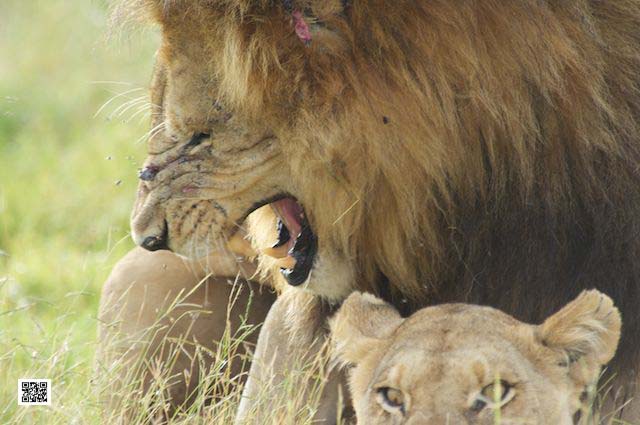
Duba Plains is an island in the Okavango Delta in Botswana, famous for its lion and buffalo encounters. Over years the “Duba Boys”, two lion brothers, were the dominant males of the local pride, but times got difficult when a buffalo killed one of the brothers. That meant for the remaining brother that he had to control the entire territory by himself and this was a difficult task. Male lion walk the borders of their territory to make sure there are no intruders to maintain their authority. But when the territory is a bit big for one male lion the intruders can slip through. And that is what “Skimmer Boy” from the neighboring island did.
We found him one day mating with one of Duba Boy’s females. He didn’t get to that point easily, like his face showed. There was obviously a heavy fight between the two male lion, which the intruder won. He was at last happily mating with the female for days. That was definitely a sign that change was coming upon the pride, the remaining Duba Boy was not strong enough to control the territory without his brother and Skimmer Boy had made his move.
Let’s hope that the situation was cleared before the new cubs were born. Otherwise the naughty move of Skimmer Boy might be not so smart for the newborn cubs. Male lion do not accept cubs of another male and kill them.
Being a lion is not an easy life, although we might think that when seeing them snoozing for the whole day.
Ute Sonnenberg for www.rohoyachui.com

